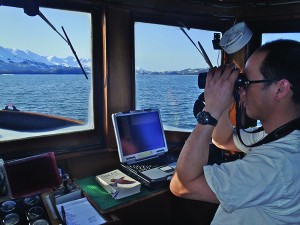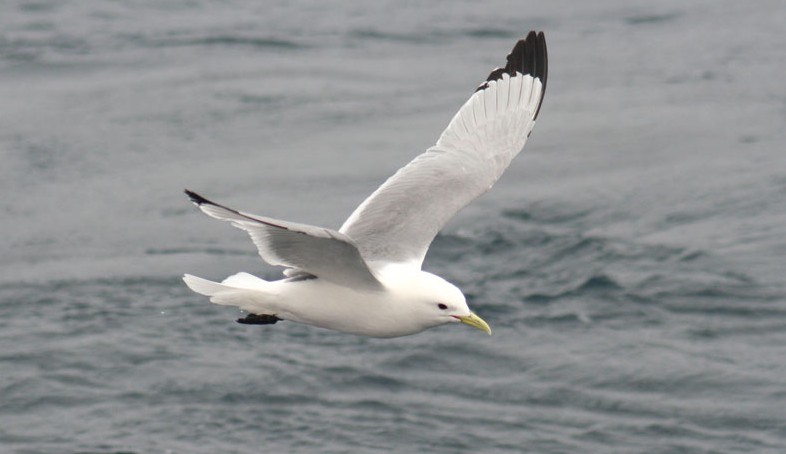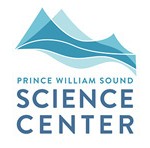Pirouette above the sea,
dive fast on pleated wing
Sand lance for a meal
Why are we sampling?
Of the marine birds that overwinter in Prince William Sound (PWS), nine species were initially injured by the Exxon Valdez oil spill, including three species that have not yet recovered (marbled murrelet, Kittlitz’s murrelet, and pigeon guillemot). Long-term monitoring of marine birds in Prince William Sound during winter is needed to understand how post-spill ecosystem recovery and changing physical and biological factors are affecting bird abundance and species composition, as well as their distribution and habitat use.
Where are we sampling?
We conduct marine bird surveys throughout the open and nearshore waters of Prince William Sound, including in juvenile herring nursery bays such as Zaikof, Whale, Eaglek, Lower Herring, Gravina, and Simpson. These surveys provide coverage in four different quadrants of Prince William Sound.
How are we sampling?

Prince William Sound Science Center biologist Bobby Hsu conducting marine bird surveys during winter in conjunction with EVOS-funded Herring surveys.
We conduct surveys between mid-September and March following established U.S. Fish and Wildlife Service marine bird survey protocols. One observer records the number and behavior of birds and marine mammals occurring along a strip transect that is 300 meters wide (150 meters on both sides and ahead of the boat, in distance “bins” of 50 meters). Additionally, we record any noteworthy observations out to 1 kilometer on either side of the boat.





